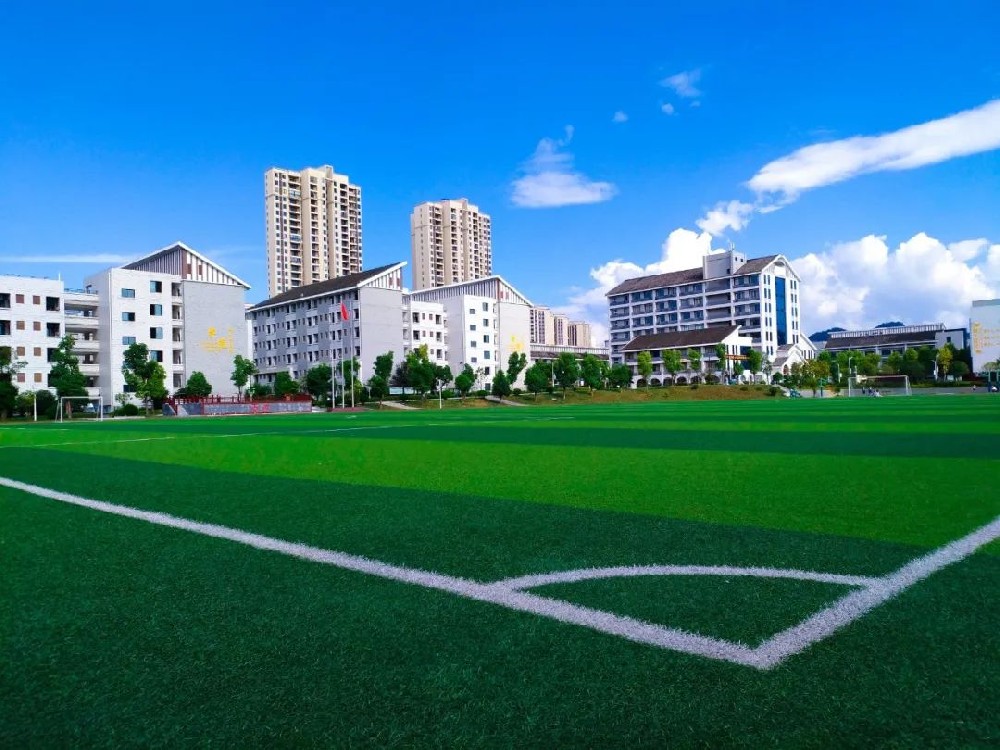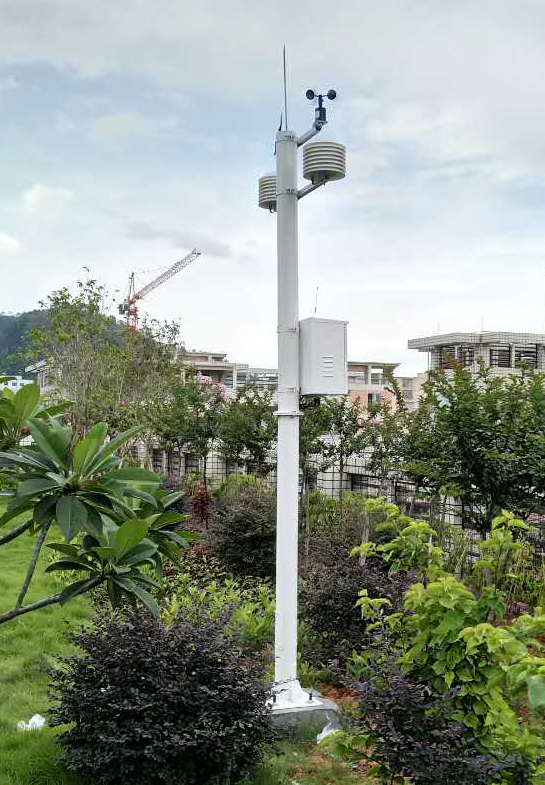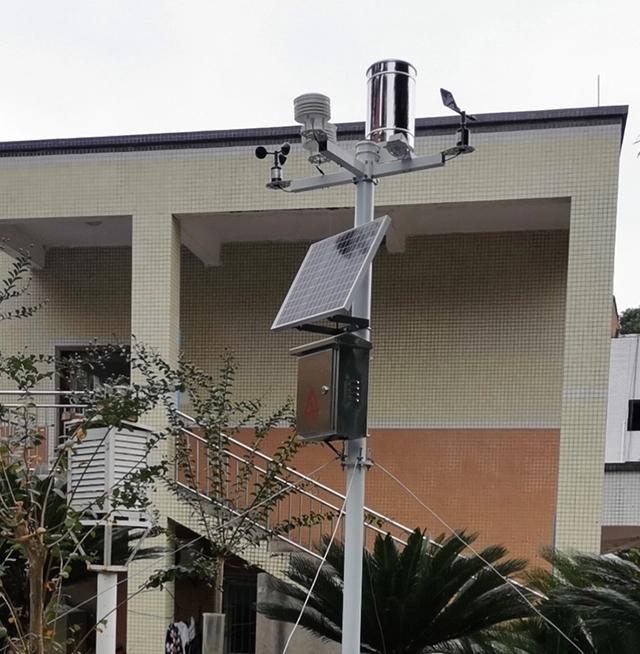

— Blogs —
—Products—
 Consumer hotline +8618073152920
Consumer hotline +8618073152920 WhatsApp:+8615367865107
Address:Room 102, District D, Houhu Industrial Park, Yuelu District, Changsha City, Hunan Province, China
Product knowledge
Time:2023-12-16 16:32:30 Popularity:2387
A school meteorological station refers to the equipment and facilities set up within a school for collecting, recording and analyzing weather data. It aims to provide a platform for hands-on learning where students can participate in activities such as meteorological observation, data collection and analysis, and weather forecasting.

School weather stations usually include a range of sensors and instruments to measure and monitor various meteorological elements such as temperature, humidity, wind speed, wind direction, rainfall, pressure, etc. These sensors automatically or periodically record relevant data, which is then stored in a database for further analysis and use.
In addition to weather sensors, school weather stations may be equipped with other equipment such as data loggers, display screens, computers and communication equipment so that students and teachers can acquire and analyze meteorological data in real time.
School weather stations can not only provide students with hands-on learning opportunities, develop their scientific literacy and empirical thinking skills, but also help schools make safety decisions, promote interdisciplinary integration, strengthen ties with the community, and even contribute to public science projects.
In summary, a school weather station is a device and facility set up within a school to collect and analyze weather data, designed to provide students with hands-on learning opportunities and help the school and community better understand and respond to weather changes.

School weather station sensors:
Sensor configurations for school weather stations vary by manufacturer and purpose of use. Here are some of the sensors commonly found in school weather stations:
1. Temperature sensor: used to measure air temperature. Temperature sensors can be installed in indoor or outdoor locations.
2. Humidity sensor: Used to measure air humidity, usually used together with temperature sensors. Humidity sensors can help predict fog, frost, or other relevant weather patterns.
3. Wind speed sensor: used to measure wind speed, usually installed on the ground and higher positions. Wind speed sensors can detect severe weather events such as storms and rotating cyclones.
4. Wind direction sensor: Used to measure wind direction, Its role is to collect and record the wind direction data in the environment, providing people with accurate weather information and wind direction reference, thereby providing important support for various activities and decision -making. etc.
5. Rainfall sensor: used to measure rainfall. Rainfall sensors can detect the intensity and duration of rainfall and help predict flooding and other related weather events.
6. Pressure sensor: used to measure atmospheric pressure. Barometric sensors can help predict specific weather events such as cyclones and hurricanes.
7. Solar radiation sensor: used to measure the intensity of solar radiation. Solar radiation sensors can help predict weather events such as thunderstorms and heat waves.
8.Soil Temperature sensor: used to measure the temperature of the soil. Ground temperature sensors can help predict freezing, permafrost, and other related weather patterns.
9. Air quality sensors: used to measure particulate matter, carbon dioxide, carbon monoxide, etc., in the air quality to help understand the pollution in the urban environment.

The above is a list of some common sensor types, and different manufacturers will configure different types of sensors according to their positioning and needs.
School weather stations are meteorological monitoring systems installed in educational institutions (e.g. schools, universities, etc.). The school weather station is designed to provide students, teachers, and staff with real-time weather data for specific locations. Here are some of the main functions and values of a school weather station:
1. Data Collection: The school weather station collects various meteorological parameters, including temperature, humidity, wind speed and direction, rainfall, barometric pressure and solar radiation. This data is collected on an ongoing basis and is available to students and teachers for educational purposes.
2. Educational tools: School weather stations serve as valuable educational tools that enable students to learn about meteorology, climate science and environmental studies. They can observe and analyze weather patterns, make weather forecasts, and understand the impact of weather on the environment and daily activities.
3. Hands-on learning: The school weather station provides hands-on learning opportunities to enable students to actively participate in the collection and analysis of meteorological data. This encourages critical thinking, problem solving and scientific inquiry, promoting a deeper understanding of weather and climate concepts.
4. Integration with the curriculum: Weather stations can be integrated with a variety of subjects and curriculum areas, including science, geography, mathematics, and technology. Teachers can incorporate weather data into their curriculum for experiments, research projects, or even artistic or literary activities.
5. Weather safety: The school weather station contributes to weather safety on campus. By monitoring real-time weather conditions, schools can issue alerts or warnings of severe weather events and take the necessary steps to ensure the safety of students, staff and visitors.
6. Public Science Projects: School weather stations can contribute to public science projects by sharing data collected with larger weather networks or organizations. Students can actively participate in data sharing and analysis, contributing to broader scientific research and understanding.
7. Community involvement: Weather data collected by school weather stations can be shared with local communities, promoting participation and collaboration. Schools can provide weather updates, forecasts, and historical data to nearby residents, the agriculture department, or local news media.
8. Career Exploration: The school weather station provides students with insights into career paths related to meteorology, environmental science, climate research, or data analysis. It can inspire students to pursue careers in these fields and provide them with practical skills and knowledge.
Overall, school weather stations enhance the educational experience by providing hands-on learning opportunities, promoting scientific inquiry and deepening understanding of weather and its impact on the environment. They also contribute to weather safety on campus and can engage students in public science projects and career exploration.
Related recommendations
Sensors & Weather Stations Catalog
Agriculture Sensors and Weather Stations Catalog-NiuBoL.pdf
Weather Stations Catalog-NiuBoL.pdf
Related products
 Combined air temperature and relative humidity sensor
Combined air temperature and relative humidity sensor Soil Moisture Temperature sensor for irrigation
Soil Moisture Temperature sensor for irrigation Soil pH sensor RS485 soil Testing instrument soil ph meter for agriculture
Soil pH sensor RS485 soil Testing instrument soil ph meter for agriculture Wind Speed sensor Output Modbus/RS485/Analog/0-5V/4-20mA
Wind Speed sensor Output Modbus/RS485/Analog/0-5V/4-20mA Tipping bucket rain gauge for weather monitoring auto rainfall sensor RS485/Outdoor/stainless steel
Tipping bucket rain gauge for weather monitoring auto rainfall sensor RS485/Outdoor/stainless steel Pyranometer Solar Radiation Sensor 4-20mA/RS485
Pyranometer Solar Radiation Sensor 4-20mA/RS485
Screenshot, WhatsApp to identify the QR code
WhatsApp number:+8615367865107
(Click on WhatsApp to copy and add friends)
